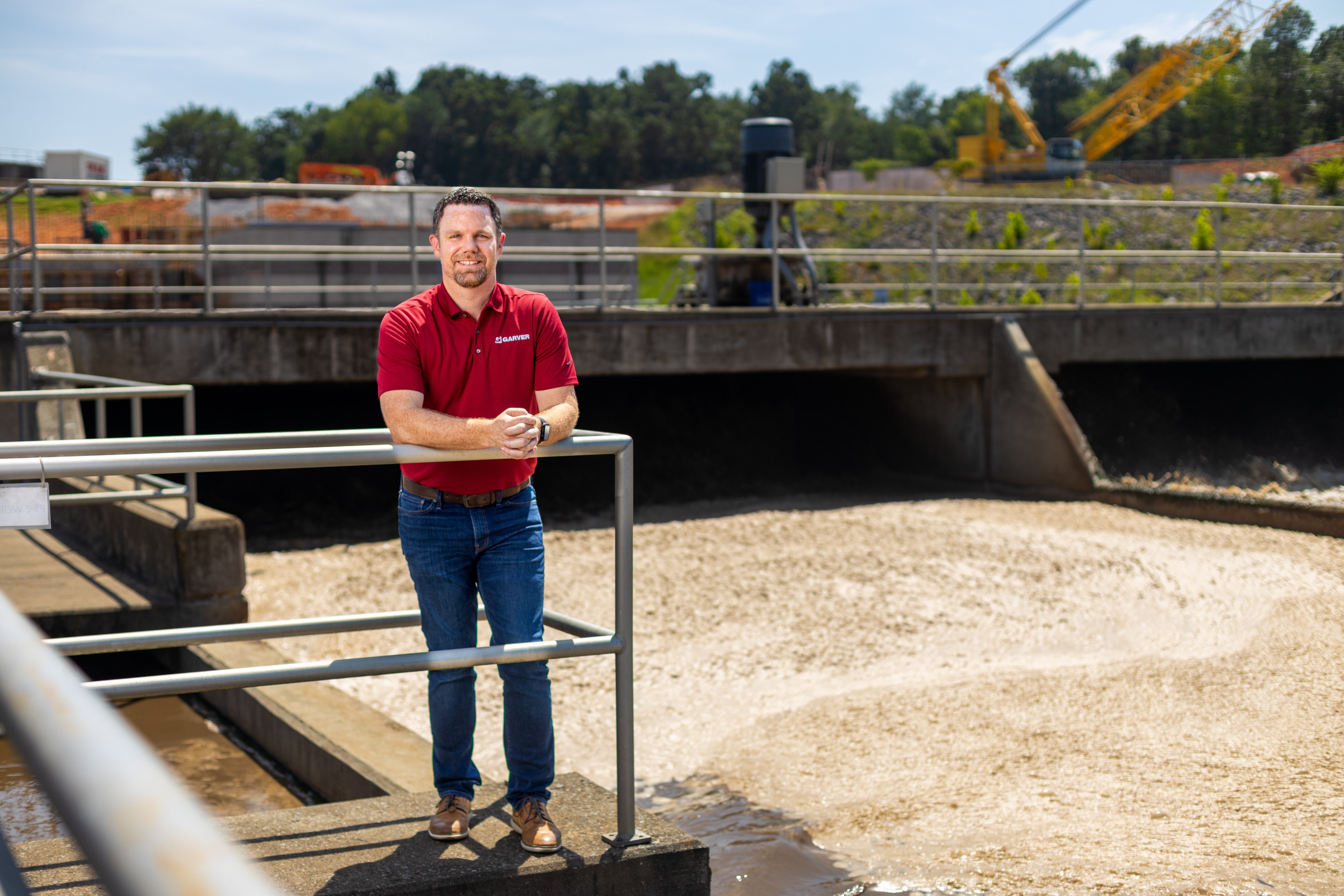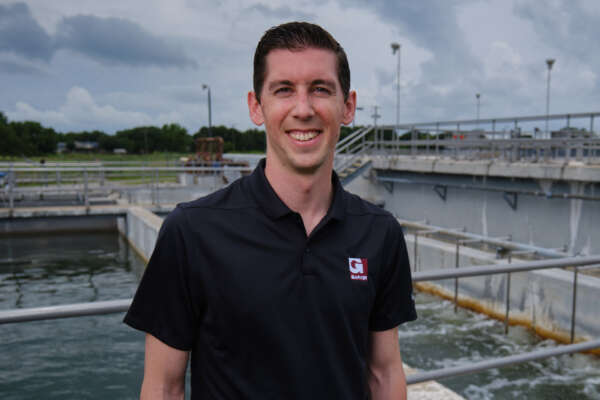Key takeaways for Arkansas water utilities from the Northwest Arkansas Nutrient Workshop

Nutrient issues - those connected to the Illinois River Basin, throughout Arkansas, and across the country - aren’t going away anytime soon. Important conversations continue about the environmental damage caused by excess phosphorus and nitrogen and the discharge limits of those nutrients, driving regulatory action and creating uncertainty as debates over regulatory action play out in lawsuits and legislatures. Being in limbo is rarely fun. And the uncertainty facing area water utilities underscores the need for open communication and reliable information.
That’s why Garver hosted a Northwest Arkansas Nutrient Workshop on April 4, 2024, with representatives from the Arkansas Department of Energy & Environment, Division of Environmental Quality (DEQ), from the Arkansas Natural Resources Commission (ANRC), and from utilities in Northwest Arkansas and around the state. For utilities that don’t discharge into the Illinois River and aren’t in Northwest Arkansas, or that just couldn’t attend, I’ve compiled the workshops’ key takeaways concerning important updates from DEQ, treatment options for phosphorus and nitrogen removal, and potential future regulations to keep an eye on.
Regulatory update on EPA’s push for lower phosphorus discharge limits in NWA
The lawsuit between the state of Arkansas and the Environmental Protection Agency (EPA) over wastewater treatment permits issued to the Northwest Arkansas Conservation Authority (NACA) and Springdale Water Utilities (SWU) and the monthly average discharges of phosphorous those permits allow has not yet been decided. Settlement discussions, however, are underway. Based on information presented by DEQ, new information pertinent to the lawsuit has also come to light: EPA modeling of the Illinois River watershed and water quality tests revealed that storm runoff contributes more nutrients to the water than treated wastewater and that, in some places, the amount of phosphorus would be higher without the treated water discharged into the watershed.
Both NACA and SWU discharge treated water into tributaries of the Illinois River, and EPA’s objections to new permits for both came about after EPA reviewed comments from environmental groups in Oklahoma and the Oklahoma Department of Environmental Quality.
If you’ve been following this story, then you probably know that conflict connected to phosphorus discharges into tributaries of the Illinois River goes way back. But you may not know that it goes all the way back to the mid-1980s, when the City of Fayetteville, Arkansas, applied for a National Pollutant Discharge Elimination System (NPDES) permit from the EPA to discharge municipal wastewater from a new wastewater treatment plant into Mud Creek, a tributary of the Illinois River in Oklahoma.
Oklahoma’s eventual lawsuit against Arkansas, challenging the permit, went to the U.S. Supreme Court in 1992. Oklahoma succeeded; the court ruled that states upstream must recognize and uphold water quality rules from states downstream. But that didn’t put an end to this contentious issue. And while progress has been made - phosphorus levels have been significantly reduced and Oklahoma and Arkansas began formal collaborations to lower total phosphorus limits in 2003 - concern about nutrient levels, particularly phosphorus, in the Illinois River persist.
When NPDES permits came up for the standard five-year renewal in the late 2000s, they were placed on indefinite hold due to regulatory uncertainty. In 2018, population growth in Northwest Arkansas caused NACA to seek an expansion permit that would allow for an average monthly phosphorus discharge of 0.35 milligrams per liter (mg/L). The state also decided to renew outstanding “expired” permits, starting with the oldest first: SWU for an average monthly phosphorus discharge of 1.0 mg/L. In 2022, after the deadline for EPA objections to the permits had passed, EPA formally objected to these limits, asserting that permits should set the discharge limit at 0.1 mg/L.
The state of Arkansas disagreed with this more stringent limit and with EPA’s objections coming well after the 90-day timeframe for review and comments. They sued, and that brings us to the current lawsuit between EPA and the state.
Proposed rules for nutrient trading are coming
Associate director of DEQ Stacie Wassell announced that the Energy and Environment Department is planning to propose rules allowing nutrient trading. This would give larger utilities with the means to implement costly wastewater treatment improvements the option of selling some of the benefit to smaller utilities in the same watershed that are unable to afford such treatment improvements, among other things.
Debates about nutrient levels are happening across the country and they aren’t limited to phosphorus
Conversations about nutrient removal are ubiquitous across the industry. Increasing EPA involvement and the push for lower limits isn’t unique to Arkansas. There’s been a push for lower phosphorus discharge limits in Alabama, for example, and very recently in Texas. Colorado, Missouri, and Kansas are in the process of implementing both phosphorus and nitrogen limits statewide.
Nitrogen limits in other states are not guarantees of nitrogen limits for Arkansas, but there is a definite possibility that nitrogen limits are something Arkansas water utilities will face in the future. Pressure for these limits is coming out of research and discussions about the role wastewater discharge plays in nutrient loads that go into the Mississippi River and then contribute to the Gulf of Mexico dead zone, the largest hypoxia zone in US territory and one of the largest hypoxia zones in the world.
One cause of hypoxic waters, excess nutrients lead to the overgrowth of algae, which results in eutrophication, or oxygen depletion. The lack of oxygen in the water kills fish and shellfish and disrupts the ecosystem.
Water utilities that have already incorporated biological processes for phosphorus removal will be ahead on this issue, given that implementing a true biological process for phosphorus removal involves addressing some nitrogen components that would otherwise interfere with the bugs consuming the phosphorus. Chemicals can also be used to remove phosphorus, but not nitrogen. Nitrogen removal requires a biological process. New limits on nitrogen could push utilities that don’t already have advanced biological processes in place to make significant facility upgrades.
Some water utility directors from outside of Northwest Arkansas are already watching this issue and have worked triggers connected to lower limits of phosphorus and nitrogen into master plans. This is a proactive and forward-thinking measure that gives utilities flexibility. They can build their expansion, for example, in such a way that if those triggers are met a complete redesign of the facility isn’t necessary. How and what to add on to accommodate the needed processes and achieve compliance will already be planned for.
Advances in technology and better understanding have made removing phosphorus and nitrogen less costly and less complicated
Nutrient removal is much more commonplace now than it was twenty years ago. And while achieving lower limits than Arkansas has been required to achieve in the past may not exactly be easy, it shouldn’t scare anyone. As nutrient removal technology has improved, so has the understanding of nutrient removal and, correspondingly, the design competency of engineers. Getting phosphorus levels to 1.0 mg/L and nitrogen to 10 mg/L is the new commonplace treatment target.
Years ago, to achieve a phosphorus target of 0.1 mg/L or below, utilities would have relied on an expensive membrane system that came with a complicated network of pipes, cartridges, and chemicals to clean the membranes. Now we have far more options for removing nutrients when it comes to filter technologies and biological processes.
Pilot studies of cloth media filters, for example, have confirmed that these filters can be incredibly effective, especially when paired with chemical treatment. Pilot studies have also shown that tertiary filtration can also successfully remove phosphorus to low levels.
Biological processes like the anaerobic-anoxic-aerobic or A20 process and the five-stage Bardenpho process can effectively remove phosphorus and nitrogen. Both of these processes are in use in Northwest Arkansas already: SWU uses both the Bardenpho and the A20 process, and NACA uses the A20 process with tertiary filtration. Siloam Springs WWTP has changed biological processes - from an attached growth or fixed film approach to a more advanced biological nutrient removal process called the modified University of Cape Town (mUCT) process - to achieve a lower phosphorus limit.
These are just a few great examples from here in Arkansas of ways utilities can remove nutrients effectively.
Staying aware of the industry conversation about nutrients is a simple, proactive step
They say that the best defense is a good offense, and that certainly applies to nutrient level issues. One of the best ways to be prepared is to be involved and aware of the conversation. Attending workshops and public outreach sessions, talking with a consultant, utilizing a consultant’s government relations resources to monitor what’s happening and possibly help shape regulations, and following what’s being said in local and national media outlets are all great ways to stay current and not get caught unaware.
How Garver can help
Our Nutrient Workshop wasn’t the first of its kind. We’ve done similar workshops before, and we’ll have more in the future because we’re committed to helping utilities stay in the know about statewide and national issues that affect them.
We’ve studied nutrient level issues and treatments, and we’ve successfully implemented the solutions. We know how to meet the unique treatment challenges and goals of utilities in Arkansas and across the Garver footprint. Contact me or visit our website to learn more about our water and wastewater services.









Share this article